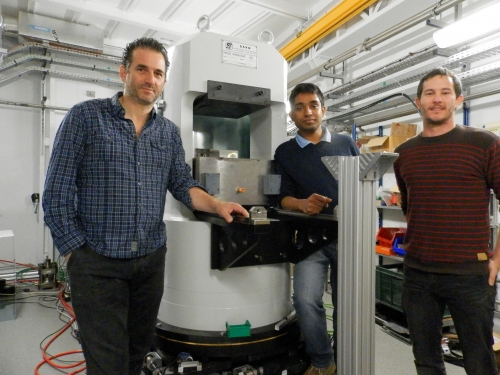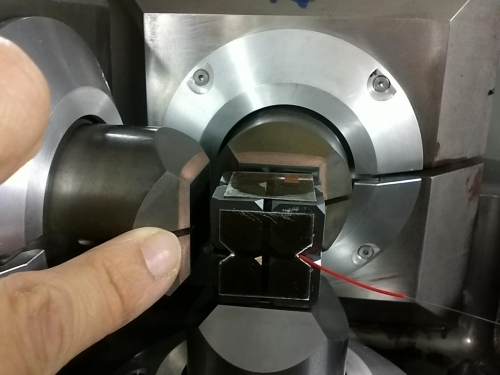During the Precambrian period, the transition between the Archean (-4 billion to -2.5 billion years) and Proterozoic eons (-2.5 billion to 541 million years) coincides with the beginning of plate tectonics, as known today. Despite its importance, the underlying cause of this major geological transition remains unknown.
Researchers from the Magmas & Volcanoes Laboratory (Clermont Ferrand), the PSICHE beamline at SOLEIL synchrotron and the CEMHTI Laboratory (Orleans) reproduced the pressure and temperature conditions enabling the measurement of the mantle melting curve up to approximately 700 km deep in laboratory replicated samples, on synthetic samples of composition similar to the primitive terrestrial mantle.
Thanks to the very intense X-radiation delivered by PSICHE, as well as electrical conductivity measurements, they could detect partial melting at temperatures from 200 to 250 degrees lower than those generally accepted.
This implies that much of the upper mantle was partially melted during the Archean eon, when the mantle was significantly warmer than today. The researchers suggest that the final mantle crystallization at the end of the Archean eon radically changed the lithosphere and mantle dynamics.

From left to right: Denis Andrault, Geeth Manthilake & Julien Chantel, Magmas & Volcanoes Laboratory
In the early stages of the Earth's formation, the mantle melted almost completely down to great depths. The energy required came from a combination of large meteoritic impacts, radioactive decay and the gravitational energy released during core segregation. Subsequently, through physicochemical mechanisms that are still hotly debated, the magma ocean quickly crystallized. But there is no doubt that the Earth's interior is still very hot today, with partially melted regions of the mantle.
In addition, studies of the oldest sites have established the existence of a series of major changes represented by the geological time scale. Concerning primitive Earth, one of these changes is the transition from Archaean to Proterozoic 2.5 billion years ago. At this time, the dynamics of the lithosphere, dominated by the play of small unstable plates, has gradually been replaced by the plate tectonics we know today. Despite the importance of this transition, its root cause remains unknown.
Earth mantle reproduced under X-ray
Believing that there could be a relationship between the high temperatures in the primitive mantle and the lithosphere dynamics, the researchers undertook to refine the melting properties of the upper mantle, located between 100 km and 670 km in depth and corresponding to pressures between 5 and 25 GPa.
They used two complementary methods for the detection of a very progressive fusion between the solidus (appearance of the first fraction of liquid) and the liquidus (disappearance of the last crystals): electrical conductivity and in situ X-ray diffraction. The second method required the use of the PSICHE beamline at SOLEIL. Consequently, during the experiments it was possible to monitor the phase transformations in the sample, the appearance of liquid, as well as the rapid movement of all minerals in the presence of liquid. It was the first time in Europe that this type of experience was conducted.
The results are consistent with mantle melting at temperatures 200-250K lower than those previously reported. A major implication is that the upper mantle must therefore be partially melted for the high temperatures prevailing in the Archaean mantle, and especially preceding the Archean eon during the Hadean eon.
The degree of mantle fusion remains difficult to estimate precisely because it depends on various parameters. Nevertheless, partial mantle melting may have covered a large fraction of the upper mantle, particularly between 100 and 400 km in depth. During the Archean eon, the fusion could have favoured mechanical decoupling between the lithosphere and the mantle on which it rests before, subsequently, with the secular cooling, the final solidification of the mantle induces a change of global dynamics, with the establishment of plate tectonics and the subduction of the oceanic crust.

The heart of the multi-anvil press installed on the PSICHE beamline on SOLEIL. An X-ray beam (shown by the finger) can detect the in situ fusion of the compressed mantle sample at the centre of the cubic anvil to a pressure of over 250,000 atmospheres, i.e. the pressure at 670 km depth in the mantle.
